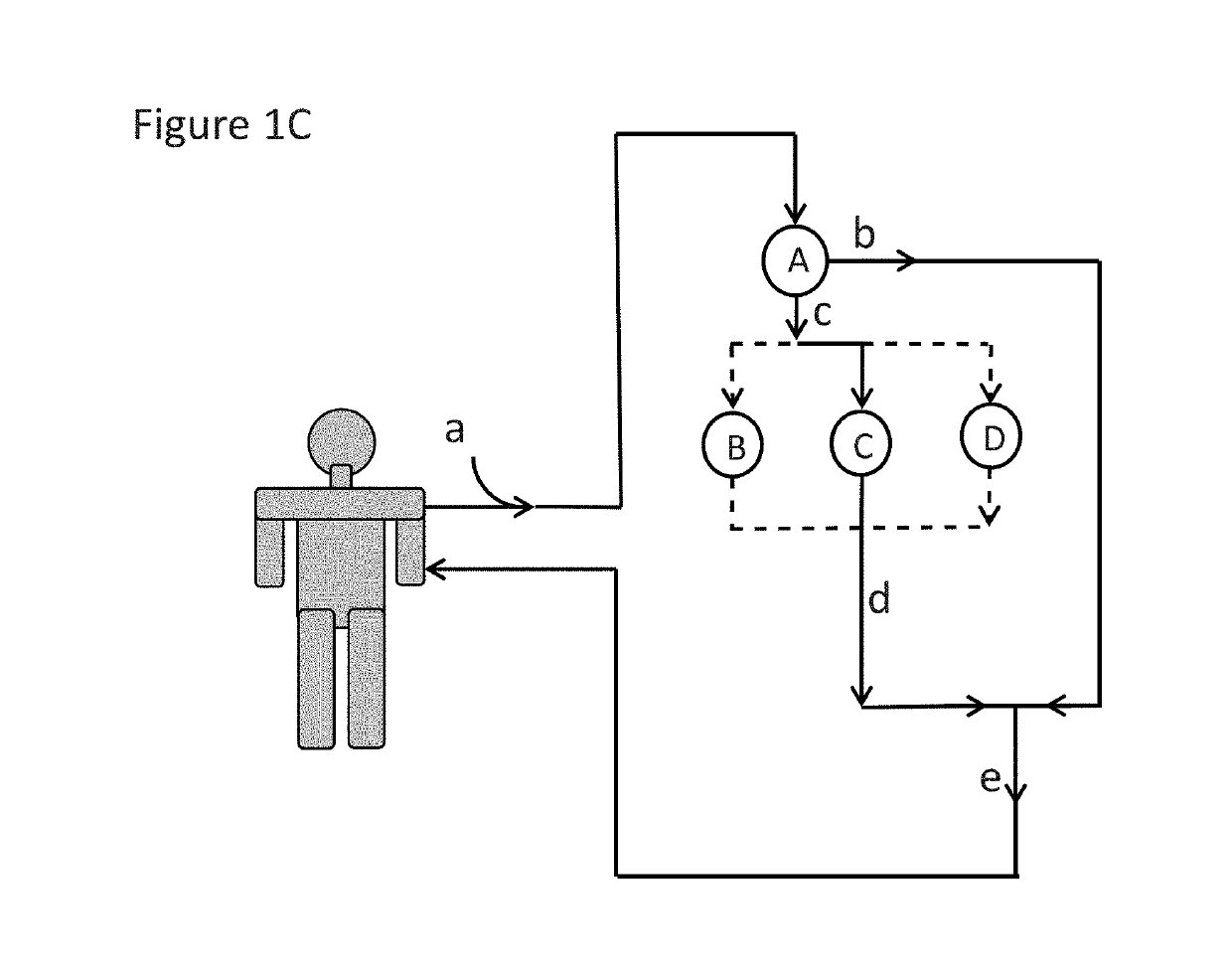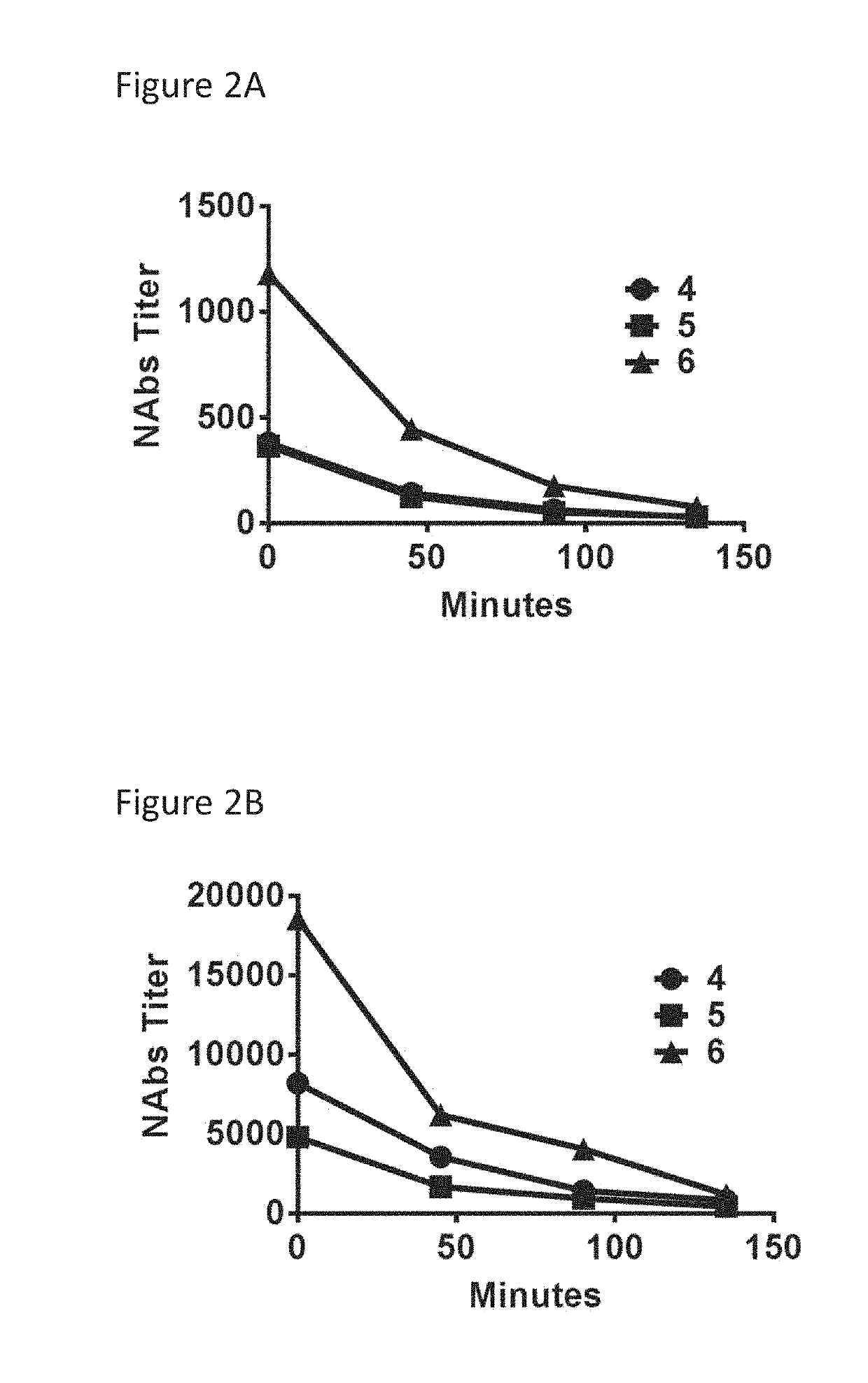Immunoadsorption
a technology of immunoadsorption and adenovirus, applied in the field of immunoadsorption, can solve the problems of cumbersome strategies and limited success, and achieve the effects of high efficiency treatment, limited success, and high efficiency transduction
- Summary
- Abstract
- Description
- Claims
- Application Information
AI Technical Summary
Benefits of technology
Problems solved by technology
Method used
Image
Examples
examples
AAV Vectors
[0077]Two different AAV vectors of the serotype 5 were used (AAV5). A first vector encoded the secreted embryonic alkaline phosphates (SEAP) (AAV5-SEAP) and the second vector encoded human coagulation factor IX (hFIX) (AAV5-hFIX). Non-human primates (Macaca fascicularis, NHP, 3 animals per group) tested negative for the presence of anti-AAV serotype 5 neutralizing antibodies were used. The first administration of AAV5-SEAP (1×1013 gc / kg) was at day 0. The second administration of AAV5-hFIX (1×1013 gc / kg) was at day 49. At most 24 hours before the second administration immunoadsorption was performed.
[0078]The immunoadsorption process was as follows. Blood was previously collected from the NHP in lithium-heparin tubes and stored at 4° C. for processing. After centrifugation at 3500 rpm for 5 min plasma was discarded and 1 mL of SAG-mannitol per 4 mL of whole blood was added. The blood concentrate was used to reconstitute blood to fill the LIFE 18 equipment v...
PUM
| Property | Measurement | Unit |
|---|---|---|
| volume | aaaaa | aaaaa |
| volume | aaaaa | aaaaa |
| volume | aaaaa | aaaaa |
Abstract
Description
Claims
Application Information
 Login to View More
Login to View More - R&D
- Intellectual Property
- Life Sciences
- Materials
- Tech Scout
- Unparalleled Data Quality
- Higher Quality Content
- 60% Fewer Hallucinations
Browse by: Latest US Patents, China's latest patents, Technical Efficacy Thesaurus, Application Domain, Technology Topic, Popular Technical Reports.
© 2025 PatSnap. All rights reserved.Legal|Privacy policy|Modern Slavery Act Transparency Statement|Sitemap|About US| Contact US: help@patsnap.com



